Risk ratio = ratio of 2 cumulative incidence estimates = relative risk;The relative risk (RR) and the odds ratio (OR) are the two most widely used measures of association in epidemiology The direct computation of relative risks is Risk Ratio vs Odds Ratio Whereas RR can be interpreted in a straightforward way, OR can not A RR of 3 means the risk of an outcome is increased threefold A RR of 05 means the risk is cut in half But an OR of 3 doesn't mean the risk is threefold;
Introduction To Genetic Epidemiology Lesson 5 Analyzing The Data
Odds ratio or risk ratio meta analysis
Odds ratio or risk ratio meta analysis- So, keep in mind that whenever we talk about the hazard ratio, relative risk, and odds ratio, there will always be a comparison to be made These values are dependent on another value for context Photo by Tingey Injury Law Firm on Relative risks all have a baseline of 1 The odds ratio will be greater than the relative risk if the relative risk is greater than one and less than the relative risk otherwise In the example above, if the adjusted odds ratio were interpreted as a relative risk, it would suggest that the risk of antibiotic associated diarrhoea is reduced by 75% for the intervention relative to the placebo group
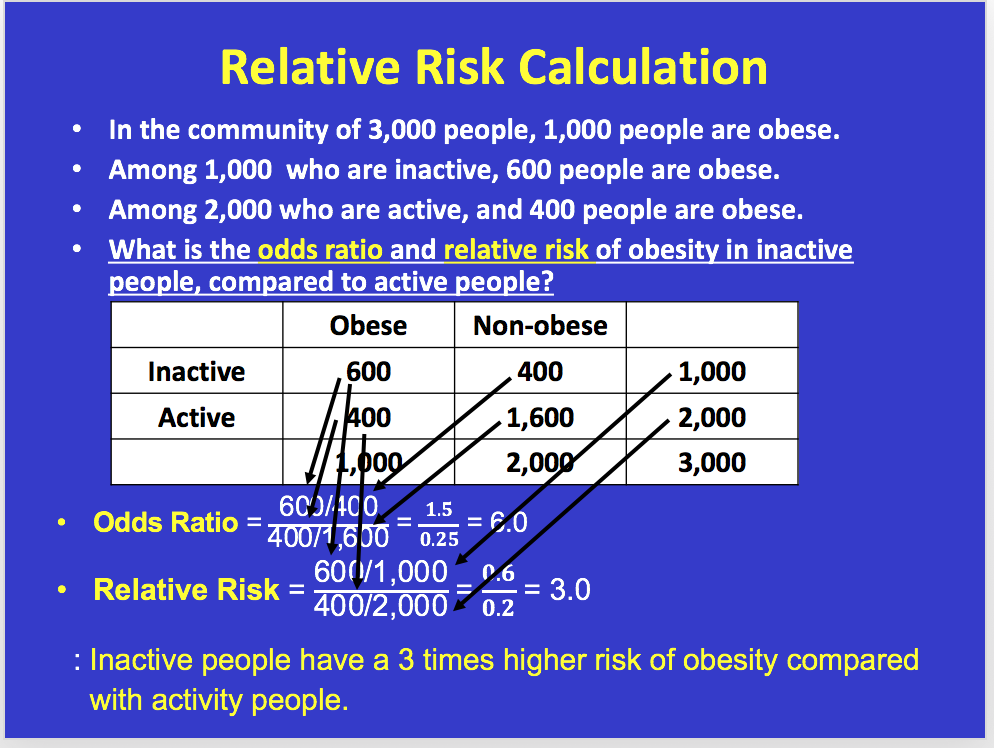



Youll Need To Know Prevalence Rate Odds Ratio Chegg Com
A risk ratio is a good measure to use for a metaanalysis if you have data from longitudinal cohorts or clinical trials It is generally thought to be easier to interpret than an odds ratio The basic difference is that the odds ratio is a ratio of two odds (yep, it's that obvious) whereas the relative risk is a ratio of two probabilities (TheThe odds of winning are 1/9,999 () and the probability of winning is 1/10,000 () In this case, odds and probability are essentially identical Relative Risk (RR) & Odds Ratio (OR) The difference between odds and probability is important because Relative Risk is calculated with probability and Odds Ratio is calculated with odds
To the Editor Dr Norton and colleagues 1 described significant limitations of odds ratios (ORs) but they did not report one important advantage of ORs compared with risk ratios (RRs) the magnitude of the association between an exposure and a dichotomous outcome is invariant to whether the outcome is defined as event occurrence (eg, death) or nonoccurrence We can define the following terms The odds ratio (OR) is the ratio of the odds of cancer in smokers to the odds of cancer in nonsmokers OR = (a/b)/ (c/d) = (ad)/ (bc) The risk ratio (RR), also called the relative risk, is the ratio of the probability of cancer in smokers to the probability of cancer in nonsmokers Relative risk is actually the ratio between incidence of outcome/disease among exposed people and that among unexposed people It is usually used in a cohort study where there is a definite population under study and we can calculate incidence rates Hence it is a direct and accurate value compared to odds ratio
Odds Ratio Vs Risk Ratio Ask Question Asked 2 years, 5 months ago Active 2 years, 5 months ago Viewed 1 times 0 $\begingroup$ Relative risk, odds ratio, risk ratio, risk difference these are all measures of the direction and the strength of the association between two categorical variables Can I use any of these four measures? A risk ratio > 1 suggests an increased risk of that outcome in the exposed group A risk ratio < 1 suggests a reduced risk in the exposed group Percent Relative Effect An alternative way to look at and interpret these comparisons would be to compute the percent relative effect (the percent change in the exposed group) In essence, we regard Plot showing the relationship between risk ratio and odds ratio for various baseline risks with y=x in blue for comparison Captions Summary Description English Plot showing the relationship between risk ratio and odds ratio for various baseline risks with y=x in blue for comparison Date 21 February 21 Source



Q Tbn And9gctxz8owky Sul84xtk4ggzacxwhkmhguhlxwyjj9avufagdrhwm Usqp Cau




Converting An Odds Ratio To A Range Of Plausible Relative Risks For Better Communication Of Research Findings The Bmj
For estimates of relative risk ratios, this becomes logarithm Odds ratio vs relative risk Odds ratios and relative risks are interpreted in much the same way and if and are much less than and then the odds ratio will be almost the same as the relative risk In some sense the relative risk is a more intuitive measure of effect size For example an odds of 01 is written as 110 and an odds of 5 is written as 51 Risk and risk ratios are more commonly used than odds and odds ratios in medicine as these are much more intuitive Risk describes the probability of an event occurring In medicine this is often an undesirable health outcome or adverse event Risk is usually expressed as a number between
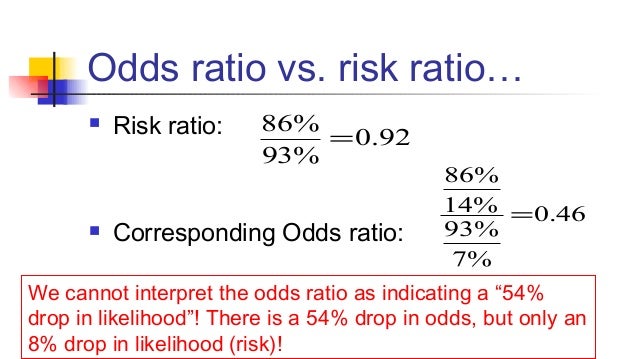



Math3010 Week 6




Odds Ratio Relative Risk Calculation Definition Probability Odds Youtube
The odds ratio ((a/c)/(b/d)) looks at the likelihood of an outcome in relation to a characteristic factor In epidemiological terms, the odds ratio is used as a point estimate of the relative risk in retrospective studies Odds ratio is the key statistic for most casecontrol studies Odds ratios While risk reports the number of events of interest in relation to the total number of trials, odds report the number of events of interest in relation to the number of events not of interest Stated differently, it reports the number of events to noneventsIn gambling, the odds describes the ratio of the size of the potential winnings to the gambling stake;




Pdf What S The Risk Differentiating Risk Ratios Odds Ratios And Hazard Ratios Semantic Scholar




A Risk Ratio A Risk Difference And An Odds Ratio Chegg Com
See all my videos at https//wwwzstatisticscom/videos/Health Stats IQ playlisthttps//youtubecom/playlist?list=PLTNMv857s9WUI5YsQMW14trmbopjZMWPa000 IntThe odds ratio is a common measure of risk but its interpretation may be hazardous A risk ratio of 10 indicates identical risk among the two groups A risk ratio greater than 10 indicates an increased risk for the group in the numerator, usually the exposed group A risk ratio less than 10 indicates a decreased risk for the exposed group, indicating that perhaps exposure actually protects against disease occurrence




Pdf The Relative Merits Of Risk Ratios And Odds Ratios Semantic Scholar




Math Formula To Reproduce A Plot Comparing Relative Risk To Odds Ratios Cross Validated
A comparison of odds, the odds ratio, might then make sense OR= ˇ 1 1 ˇ 1 ˇ 2 1 ˇ 2 Odds ratio for the Titanic example is OR= 376 037 = 1016 This is very different from the relative risk calculated on the same data and may come as a surprise to some readers who are accustomed of thinking of odds ratio as of relative risk (Greenland, 1987)Odds ratio and relative riskIn a control group The odds ratio (OR) is the odds of an event in an experimental group relative to that in a control group An RR or OR of 100 indicates that the risk is comparable in the two groups A value greater than 100 indicates increased risk;




Glossary Of Research Terminology




Assessment Of Multiplicative Interaction Using Risk Ratios And Odds Ratios Download Scientific Diagram
Since all of the measures are ratios, either of probabilities or of odds, it is clearer and simpler to use the word ratio in describing each type Risk reflects the proportion of persons experiencing the event, so it follows that comparing two cumulative incidences is The odds ratio is reported as 1 with a confidence interval of (144, 234) Like we did with relative risk, we could look at the lower boundary and make a statement such as "the odds of MI are at least 44% higher for subjects taking placebo than for subjects taking aspirin"The odds ratio is defined as the ratio of the odds of an event or disease occurring in one group to the odds occurring in another group The standard formula is X / ( 1 − X) / Y / ( 1 − Y), where X and Y are the probability of that event in the two groups, respectively In contrast, the relative risk is the risk of an event or disease
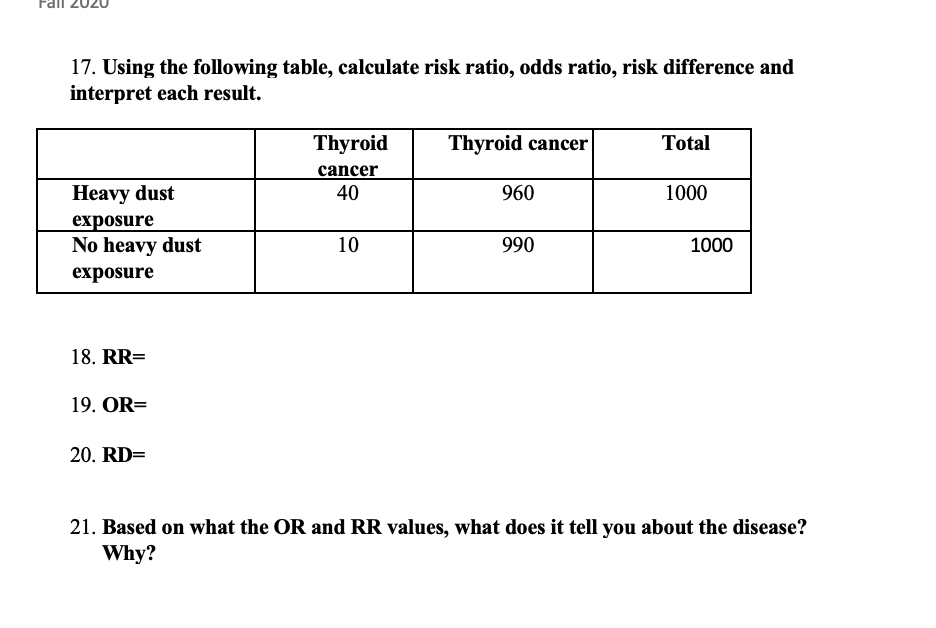



Fall 17 Using The Following Table Calculate Risk Chegg Com
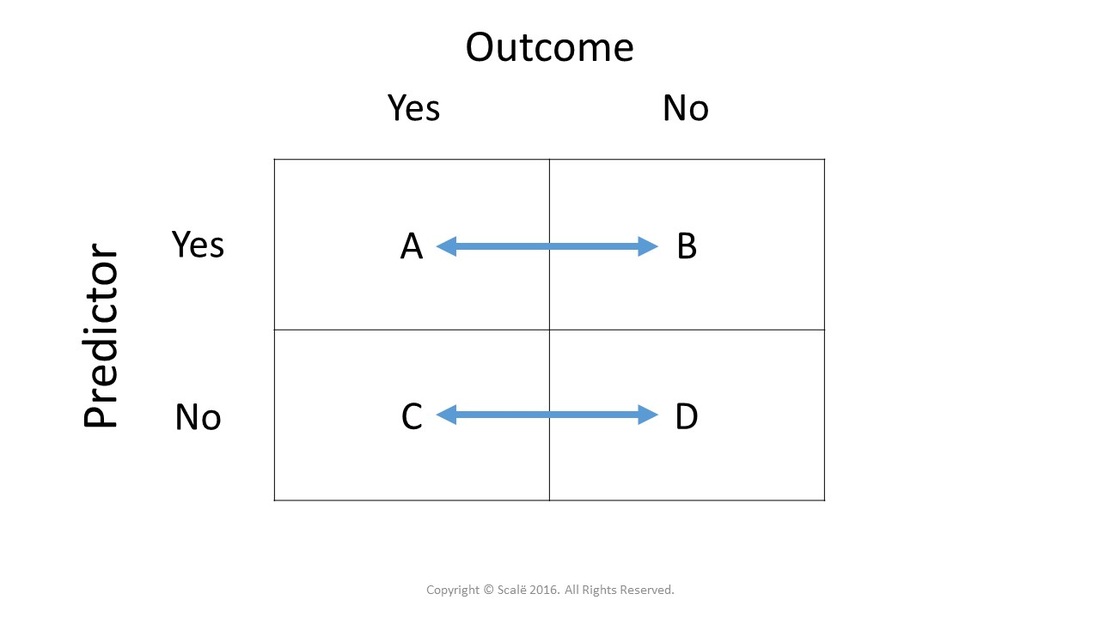



Calculate Relative Risk With 95 Confidence Intervals
The risk ratio In practice, risks and odds for a single group are not nearly as interesting as a comparison of risks and odds between two groups For risk you can make these comparisons by dividing the risk for one group (usually the group exposed to the risk factor) by the risk for the second, nonexposed, group This gives us the risk ratioThe risk or odds ratio is the risk or odds in the exposed group divided by the risk or odds in the control group A risk or odds ratio = 1 indicates no difference between the groups A risk or odds ratio > 1 indicates a heightened probability of the outcome in the treatment group The two metrics track each other, but are not equalAn odds ratio of 05 would mean that the exposed group has half, or 50%, of the odds of developing disease as the unexposed group In other words, the exposure is protective against disease Is odds ratio a measure of risk?



Introduction To Genetic Epidemiology Lesson 5 Analyzing The Data
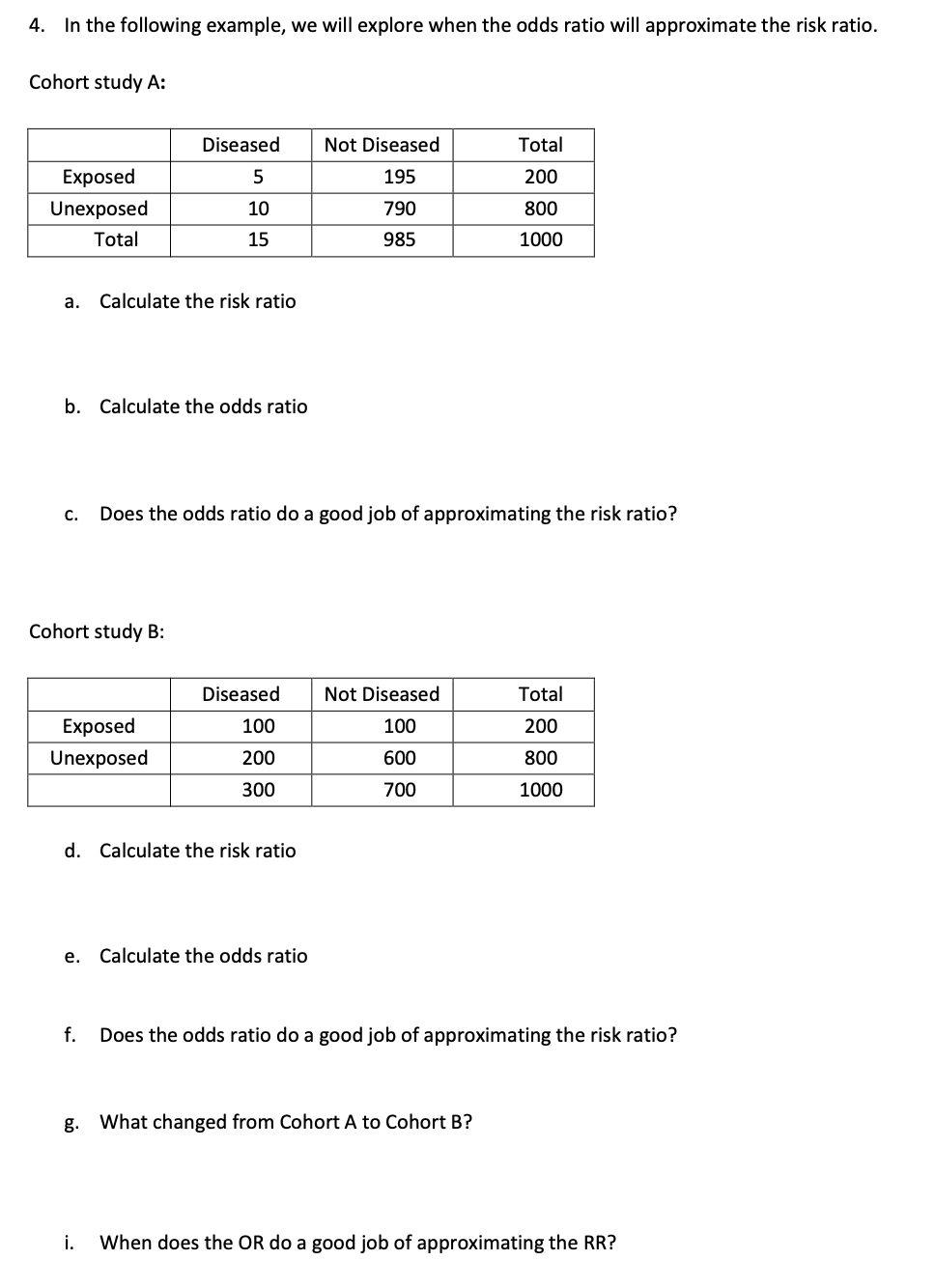



4 In The Following Example We Will Explore When The Chegg Com
Week 6 Proportions, risk ratios and odds ratios Risk ratio or relative risk Chisquared tests are tests of significance, they do not provide estimates of the strength of relationships There are different ways of doing this for different kinds of data and sizes of table, but two are particularly important in health research the risk ratio or Note that an odds ratio is a good estimate of the risk ratio when the outcome occurs relatively infrequently (The ratio of the risk of healing in the elastic bandage group to the risk in the inelastic bandage group is called the risk ratio For Table 4, the risk ratio = 0538/0284 = 1 The risk ratio is also called the relative risk and the rate ratio, all of which can be conveniently abbreviated to RR




Odds Ratios Vs Risk Ratios Stats By Slough




Figure 2 X 2 Table With Statpearls Ncbi Bookshelf
In health care it is the ratio of the number of people with the event to the number without It is commonly expressed as a ratio of two integers For example, an odds of 001 is often written as 1100, odds of 033 as 13, and odds of 3 as 31Rather the odds is threefold greater Interpretation of an OR must be in terms of odds, not probabilityThe relative risk (also known as risk ratio RR) is the ratio of risk of an event in one group (eg, exposed group) versus the risk of the event in the other group (eg, nonexposed group) The odds ratio (OR) is the ratio of odds of an event in one group versus the odds of the event in the other group



Introduction To Genetic Epidemiology Lesson 5 Analyzing The Data




Odds Ratio Wikipedia
Odds ratio vs risk ratio in randomized controlled trials Postgrad Med 15 May;127(4) doi / Epub 15 Mar 7 Authors Haribalakrishna Balasubramanian 1 , Anitha Ananthan, Shripada Rao, Sanjay Patole Affiliation 1 Department ofThe relative risk and the odds ratio are measures of association between exposure status and disease outcome in a population Relative risk In epidemiology, relative risk (RR) can give us insights in how much more likely an exposed group is to develop a certain disease in comparison to a nonexposed group Once we know the exposure and disease status of a research population, Risk ratios At a minimum, the only change that needs to be done to get risk ratios is to change the link function that relates the mean value of the response variable to the linear predictor For estimates of odds ratios, this is logit (ie the logarithm of the odds of the mean);



Population Perspective Made Easy On Vimeo
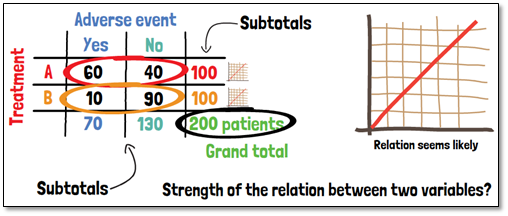



What Are Cross Tables Odds Ratio And The Relative Risk Gcp Service
An odds ratio greater than 1 indicates that the condition or event is more likely to occur in the first group And an odds ratio less than 1 indicates that the condition or event is less likely to occur in the first group The odds ratio must be nonnegative if it is definedOdds Ratio Odds Ratio for comparing two proportions OR > 1 increased risk of group 1 compared to 2 OR = 1 no difference in risk of group 1 compared to 2 OR < 1 lower risk ("protective") in risk of group 1 compared to 2 In our example, p 1 = proportion of women receiving SAT p 2 = proportion of men receiving SAT OR pp pp pp pp = − − = − − 11 22 12 21 1 If we go a step further, we can calculate the ratio between the two risks, called relative risk or risk ratio (RR), which indicates how much more likely is the occurrence of the event in one group compared with the other group Meanwhile, the odds represents a quite different concept The odds indicates how much more likely is an event to occur than not to




What Does An Odds Ratio Or Relative Risk Mean




Pdf When To Use The Odds Ratio Or The Relative Risk Semantic Scholar
A value lower than 100 indicates decreased risk The 95% confidence intervals and statisticalThe risk ratio (or relative risk) is the ratio of the risk of an event in the two groups, whereas the odds ratio is the ratio of the odds of an event (see Box 92a ) For both measures a value of 1 indicates that the estimated effects are the same for both interventions A crude odds ratio can be converted to a crude risk ratio risk ratio = odds ratio/(1 − p0) (p0 × odds ratio), in which p0 is the outcome prevalence (risk) among the unexposed Some have applied this formula to an adjusted odds ratio to obtain an adjusted risk ratio 49 This method can produce biased risk ratios and incorrect confidence intervals 26 , 32 , 41 , 50 52
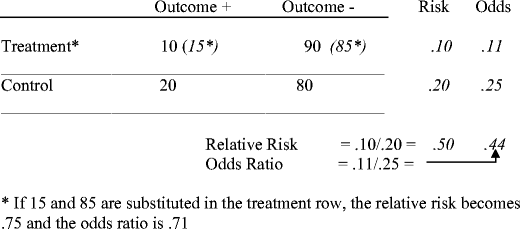



Tips For Teachers Of Evidence Based Medicine Understanding Odds Ratios And Their Relationship To Risk Ratios Springerlink




What Is The Difference Between The Risk Ratio Rr And The Odds Ratio Or Quora
Odds Ratio is the odds that the diseased group was exposed, divided by odds that the nondiseased group was exposed (a/c)/(b/d) in the classic table Relative Risk is the risk of developing disease in the exposed/intervention group, that is to say the odds of disease in the intervention arm divided by the odds of disease in the placebo arm (which is what is describedOdds ratios (OR) are commonly reported in the medical literature as the measure of association between exposure and outcome However, it is relative risk that people more intuitively understand as a measure of association Relative risk can be directly determined in a cohort study by calculating a risk ratio (RR)When the disease is rare, the odds ratio will be a very good approximation of the relative risk The more common the disease, the larger is the gap between odds ratio and relative risk In our example above, p wine and p no_wine were 0009 and 0012 respectively, so the odds ratio was a good approximation of the relative risk OR = 0752 and RR = 075 If the risks were 08 and 09, the
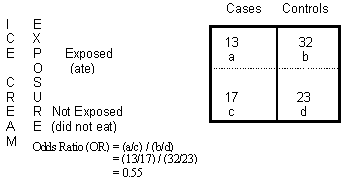



Odds Ratio Calculation And Interpretation Statistics How To




Relative Risk Or Odds Ratio For Cardiovascular Disease Incidence Download Scientific Diagram




Definition And Calculation Of Odds Ratio Relative Risk Stomp On Step1




1 A Comparison Of Odds Ratio And Risk Ratio With The Average Marginal Download Scientific Diagram




Forest Plot Of Relative Risks Or Odds Ratios From Eighteen Download Scientific Diagram




Mixing Of Confounding And Non Collapsibility A Notable Deficiency Of The Odds Ratio American Journal Of Cardiology




Probability Odds Ratio And Relative Risk Gpraj



Q Tbn And9gcq5tpzikqe8jiy9iqzxyqcbaqndofe8d2iabvvrkarpadvgvm8o Usqp Cau




Statistics Part 13 Measuring Association Between Categorical Data Relative Risk Odds Ratio Attributable Risk Logistic Regression Data Lab Bangladesh




Relative Risks And Odds Ratios What S The Difference Mdedge Family Medicine




Risk Ratio Vs Odds Ratio




On Biostatistics And Clinical Trials Odds Ratio And Relative Risk




Risk Estimates Relative Risk Ratio And Odds Ratio Analyses For Download Table




Relative Risk And Odds Ratio Usmle The Journey



Confluence Mobile Wiki Ucsf




Pdf When To Use The Odds Ratio Or The Relative Risk Semantic Scholar




Measures Of Effect Relative Risks Odds Ratios Risk Difference And Number Needed To Treat Kidney International




On Biostatistics And Clinical Trials Odds Ratio And Relative Risk
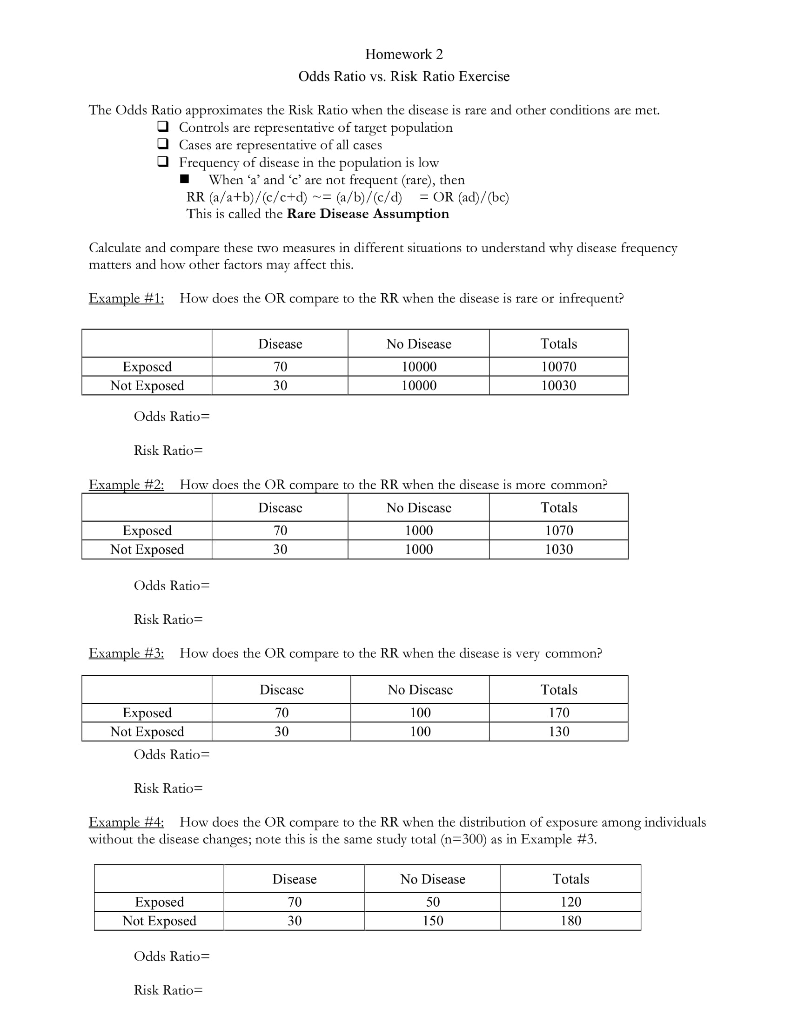



Homework 2 Odds Ratio Vs Risk Ratio Exercise The Chegg Com




Calculate Relative Risk With 95 Confidence Intervals




Calculation Of Odds Ratios Or And Relative Risk Rr Derived From Download Scientific Diagram




A Most Odd Ratio American Journal Of Preventive Medicine




How To Be Awesome At Biostatistics And Literature Evaluation Part Ii Tl Dr Pharmacy
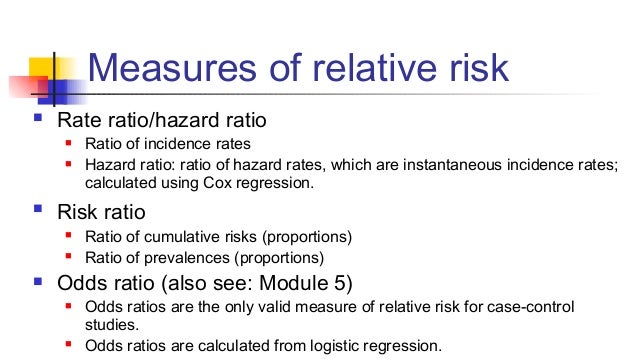



Math3010 Week 6
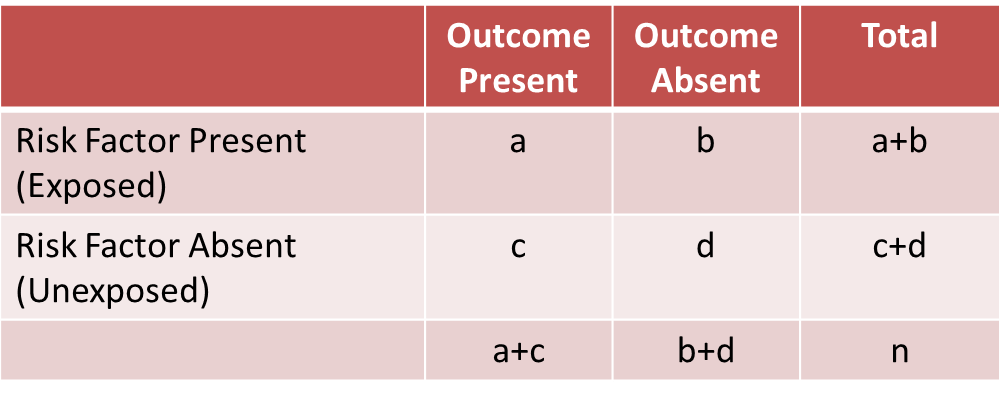



A Stratified Analysis




Youll Need To Know Prevalence Rate Odds Ratio Chegg Com



Research Statistics Basics Contents 1 Basic Concepts 2 References Basic Concepts Null Hypothesis The Hypothesis That The Independent Variable Has No Effect On The Dependent Variable For Example Steroids Do Not Improve Outcomes In Ards Would Be




Odds Ratio Wikipedia



Definition And Calculation Of Odds Ratio Relative Risk Stomp On Step1




Cureus What S The Risk Differentiating Risk Ratios Odds Ratios And Hazard Ratios




Cureus What S The Risk Differentiating Risk Ratios Odds Ratios And Hazard Ratios
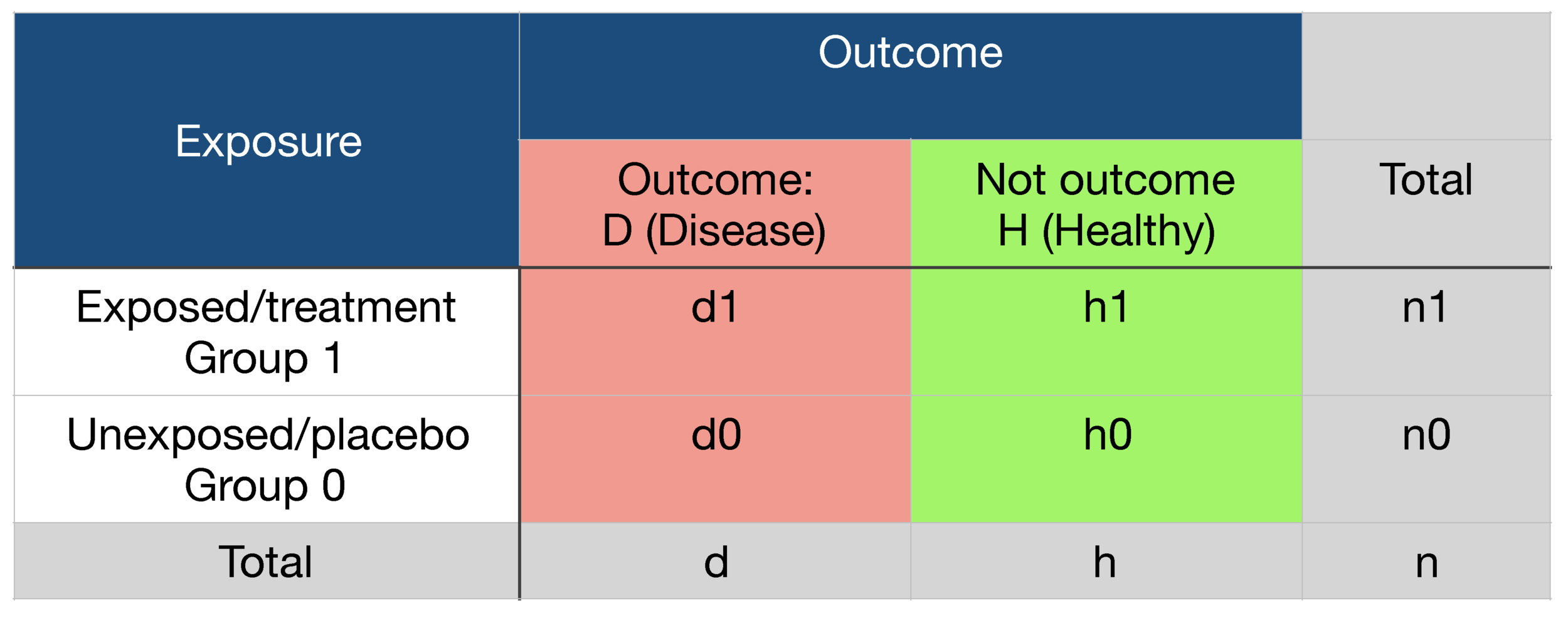



Probability Odds Ratio And Relative Risk Gpraj
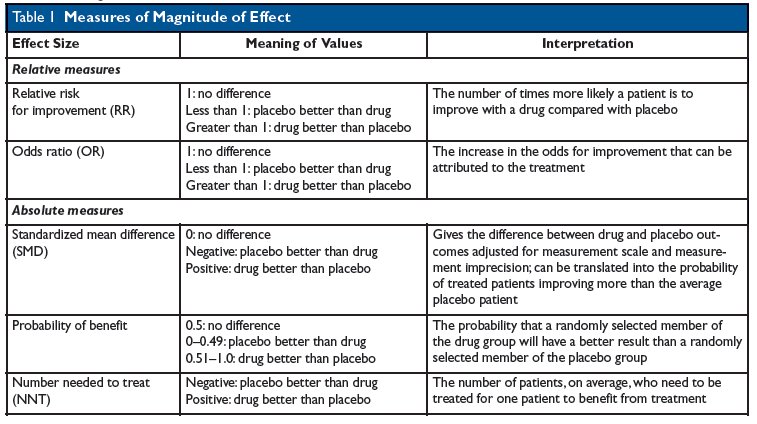



Kevin Whelan If You Re Struggling With Odds Ratios Relative Risks Standardised Mean Differences And Number Needed To Treat And The Associated Alphabet Soup Or Rr Smd Nnt Then This Paper



1




Odds Ratio Article



Relative Risk Ratios And Odds Ratios




How To Interpret And Use A Relative Risk And An Odds Ratio Youtube
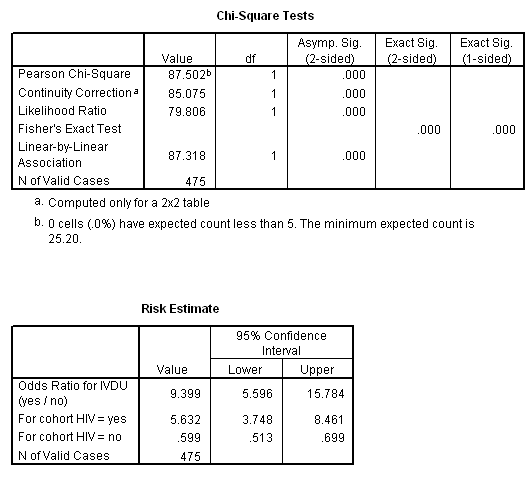



Marg Innovera




Calculation And Interpretation Of Odds Ratio Or And Risk Ratio Rr Youtube




Against All Odds How To Visualise Odds Ratios To Non Expert Audiences Henry Lau




Pdf The Relative Merits Of Risk Ratios And Odds Ratios Semantic Scholar




How To Calculate Odds Ratio And Relative Risk In Excel Statology



Risk Ratio Vs Odds Ratio Hunter 19 Notes And Things




Example 8 29 Risk Ratios And Odds Ratios R Bloggers




Research Techniques Made Simple Interpreting Measures Of Association In Clinical Research Sciencedirect



Understanding Measures Of Association Or Risk Odds Ratio Communitymedicine4all




Chapter 6 Choosing Effect Measures And Computing Estimates Of Effect Cochrane Training




Odds Ratios And Risk Ratios Youtube




A Most Odd Ratio Interpreting And Describing Odds Ratios Abstract Europe Pmc




Relation Between The Odds Ratio Relative Risk And Baseline Risk




Measures Of Effect Risk Ratio Vs Rate Ratio Risk Factors Risk Disease




Calculating Relative Risk Odds Ratio And Rate Ratio Youtube




Calculation Of Relative Risks Rr And Odd Ratios Or Download Table




Odds Ratio Vs Risk Ratio Exercise The Odds Ratio Chegg Com




Using Odds Ratio In Case Control Studies Youtube




Understanding Systematic Reviews And Meta Analysis Archives Of Disease In Childhood




Calculate Relative Risk With 95 Confidence Intervals




Risk Differences And Rate Differences
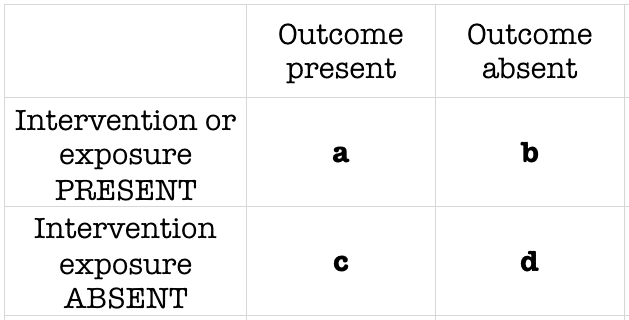



Odds Ratio Litfl Ccc Research



Q Tbn And9gctxz8owky Sul84xtk4ggzacxwhkmhguhlxwyjj9avufagdrhwm Usqp Cau




Risk Difference Rd Risk Ratio Rr And Odds Ratio Or For The Download Table




Effect Sizes Basicmedical Key




How To Calculate Odds Ratio And Relative Risk In Excel Statology




Box 9 2 A Calculation Of Rr Or And Rd




Odds Ratio Relative Risk Risk Difference Statistics Tutorial 30 Marinstatslectures Youtube




How To Calculate Odds Ratio And Relative Risk In Excel Statology




What Is An Odds Ratio And How Do I Interpret It Critical Appraisal




Statistics For Clinicians Biostatistics Course By Kevin E




Bar Graph Represents The Summary Odds Ratios Or Relative Risks Of The Download Scientific Diagram




Pdf The Relative Merits Of Risk Ratios And Odds Ratios Semantic Scholar




Measures Of Effect Relative Risks Odds Ratios Risk




1 Relative Risks Odds Ratios Or Hazard Ratios Of Risk Factors For Download Table




Literature Search




Relative Risk Versus Odds Ratio Usmle Biostatistics 4 Youtube




The Difference Between Relative Risk And Odds Ratios The Analysis Factor




Ppt Odds Ratio Vs Relative Risk Powerpoint Presentation Free Download Id
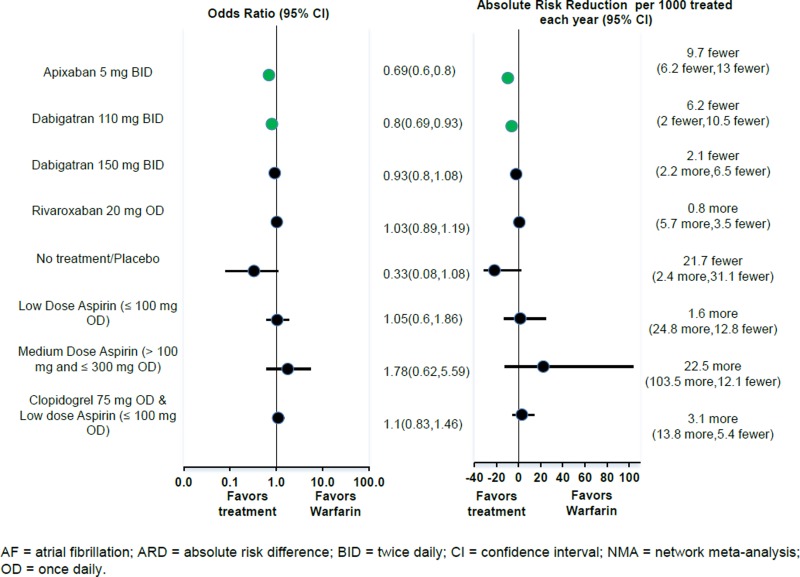



Figure 3 Odds Ratio And Absolute Risk Difference Of Major Bleeding For Antithrombotic Therapies Relative To Adjusted Dose Warfarin For Patients With Af Fixed Effects Nma Antithrombotic Agents For The Prevention Of Stroke




Odds Ratios Versus Relative Risk




Risk Ratio Versus Odds Ratio Dr Journal Club




Relative Risk Odds Ratios Youtube



No comments:
Post a Comment